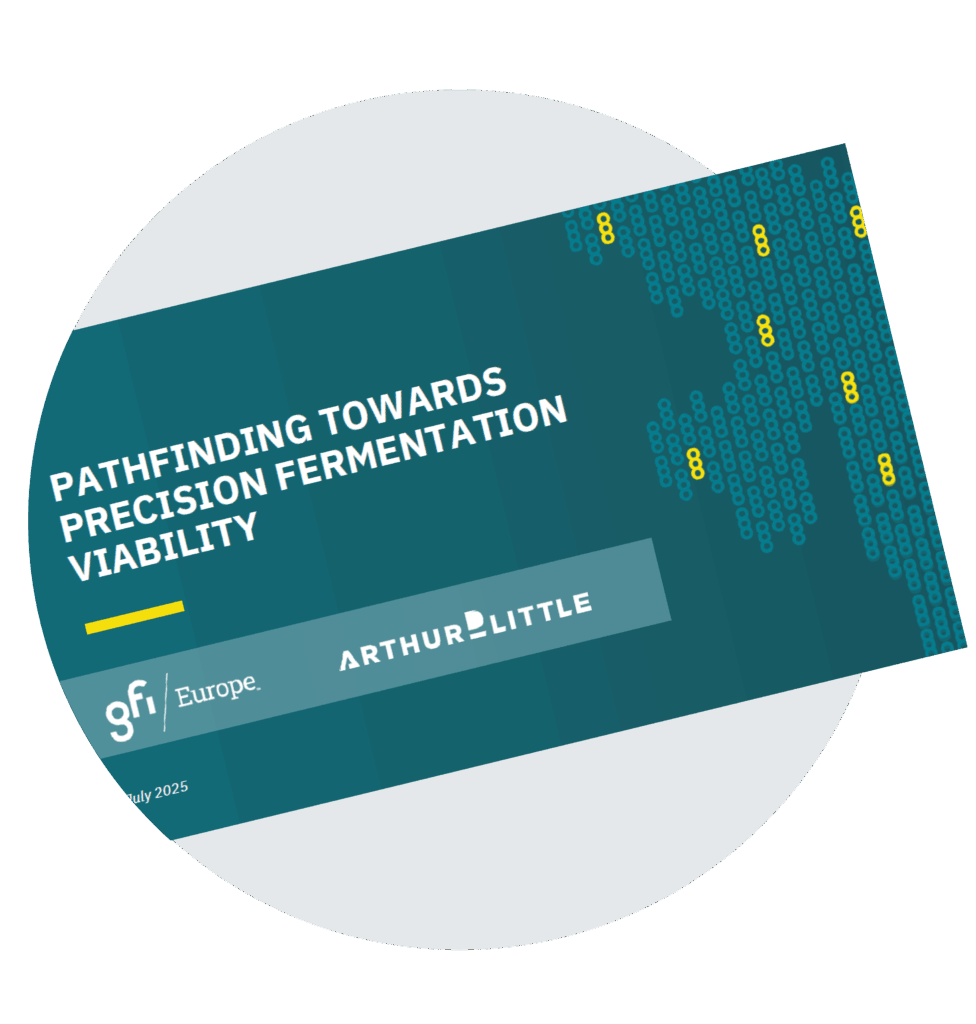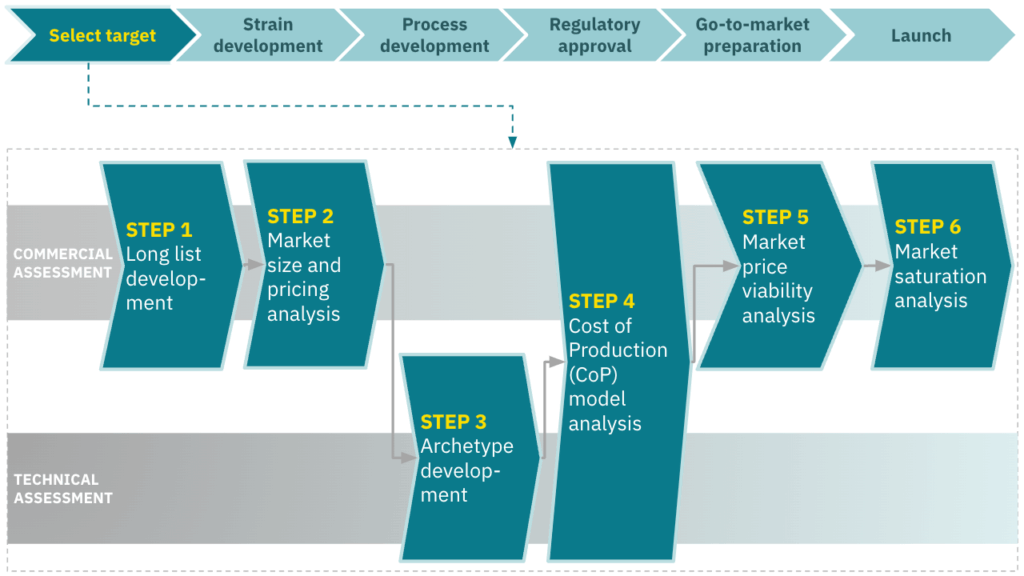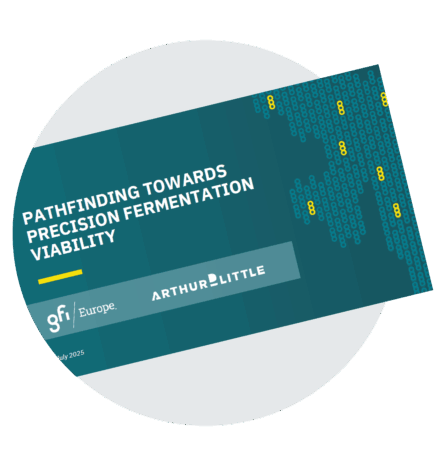Pathfinding towards precision fermentation viability
Identifying commercially viable molecules can support companies in the near-term to reduce risk, build capabilities, and lay the groundwork for scaling towards broader impact.

Executive summary
Precision fermentation (PF) has enabled the production of key food ingredients for decades, and its potential is now expanding to the alternative protein industry – but commercialising these innovations remains challenging due to cost barriers, especially for commodity molecules.
To address this, the Good Food Institute Europe and Arthur D. Little Consultancy partnered on a project to develop a framework for identifying viable molecules for precision fermentation market entry. By building a foundation on near-term feasible target molecules, companies can reduce risk, build capabilities, and lay the groundwork for scaling towards broader impact. This report details a structured approach to guide target molecule selection, and examples of case studies that demonstrate how to analyse high-potential molecules for commercial and technical feasibility. This can help companies bridge the ‘valley of death’ and ultimately deliver on PF’s full potential to reduce environmental impacts and boost food security.
Target molecule selection framework
A rigorous target selection process analysing both commercial and technical viability ensures R&D and investment are aligned with viable market opportunities.

Key findings
- Of the 67 precision fermentation molecules analysed, ~24% have promising market potential based on lower unit cost estimates compared to current market prices for conventionally-produced molecules.
- The most viable opportunities exist for proteins (instead of fats and lipids, and other small molecules) with high functional value and premium applications.
- Further optimisation of key variables, such as target yield on substrate, substrate costs, culture volume at harvest, and titre at harvest could significantly reduce unit economics. As the sector advances its technology and processes, more molecules could become viable candidates for competitive production through precision fermentation.
Recommendations
For corporates
- Adopt a flexible, stage-gated approach to PF: Fund projects incrementally, end low-potential efforts early, and scale up winners decisively.
- Set up a PF ‘opportunity radar’: Formal scouting to identify molecules that have viable market entry points, large market opportunities, and low saturation.
- Secure platform footholds: Pursue joint ventures or contract manufacturing deals that convert idle fermentation assets into PF‐ready capacity.
- Build PF-made ingredients into the foundation of future product innovation: Incorporate PF ingredients into new product development where this can support ESG goals and enable differentiated product growth.
For startups
- Rigorous product-market fit check: Use structured frameworks to focus R&D on molecules with viable entry points and clear differentiation.
- Exploit “cost-in-use” storytelling: Shift from $/kg to $/functional-dose to highlight PF’s competitiveness even if headline cost of production (CoP) lags conventional benchmarks.
- Leverage corporate muscle: Pursue ‘anchor off-taker’ or ‘shared capex’ models with food and beverage majors to plug the scale-up funding gap and fast-track regulatory approval.
- Expand platform potential: Once a strain/downstream processing (DSP) combination is proven, rapidly branch into adjacent molecules with shared technical attributes to expand addressable markets with minimal incremental capex.

Download the full report
Read more about the research and the pathway to precision fermentation viability.
In this webinar, we presented the key findings of the Good Food Institute Europe and Arthur D. Little Consultancy’s report “Pathfinding towards precision fermentation viability”.
